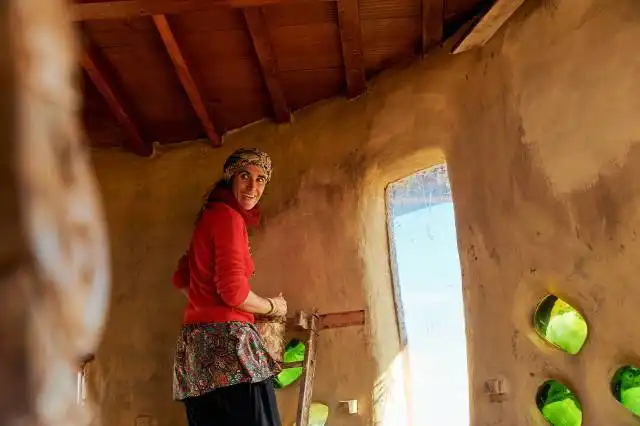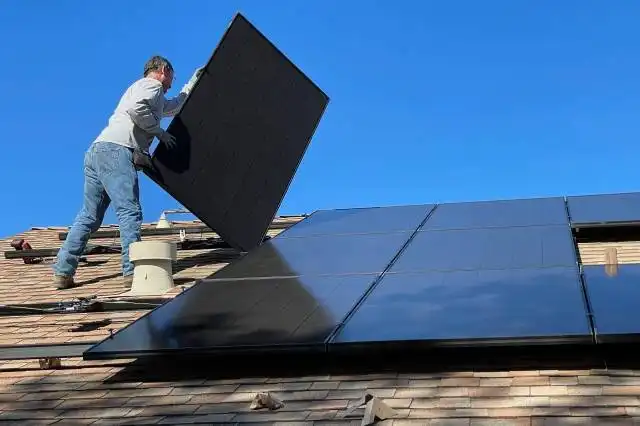Start a Green Energy Business
Envisioning Your Role in a Sustainable Future: Superhero of Green Energy
| Updated


GREEN ENERGY BUSINESS
Imagine being a catalyst for change as the owner of a Green Energy Business! Your key role will be to harness renewable and sustainable energy sources like solar, wind, and hydropower to create electricity. Become a superhero saving the world by reducing dependency on non-renewable and pollutant energy sources. Just picture it, trading your business suit for a cape, fighting for a cleaner, healthier planet while making a profit - a true win-win!
Jump to Business Plan
RELATED BUSINESS IDEAS
Browse ALL Sustainability & Eco-Friendly Initiatives Business Ideas
Discover Your Perfect Domain
Unlock the door to your online success with our hand-picked selection of premium domain names. Whether you're starting a new venture or rebranding an existing one, the right domain can set the tone for your digital presence. Browse through our curated list, each with its unique potential to enhance your brand's visibility and credibility.
GREEN ENERGY MINI BUSINESS PLAN
This a quick reality check to help you identify the strengths and weaknesses of your business concept before you dive in.
Green Energy Business
Expected Percent Margin:
- Gross Margin: 30-50%
- Net Profit Margin: 15-25%
Earnings Expectations:
- Daily Earnings: $300 - $600
- Weekly Earnings: $1,500 - $4,200
- Monthly Earnings: $7,500 - $16,800
- Annual Earnings: $90,000 - $200,000
Actions to Hit Those Numbers:
Service Offered:
- Initial Investment: At least $30,000-$60,000 for equipment, installation, and necessary certifications.
- Service Mix: Offer a mix of solar panel installation, wind energy solutions, and energy auditing.
Marketing and Customer Acquisition:
- Digital Marketing: Have a strong online presence, SEO optimization, posting 3-4 times a week.
- Local Advertising: Budget at least $700 a month for local advertising and community outreach.
Sales and Customer Experience:
- Staffing: Employ 2-3 full-time staff trained in green energy solutions.
- Customer Engagement: Train staff in consultative selling, seeking to understand customer energy needs and advising appropriate solutions.
Cost Control:
- Operations: Minimize overhead costs by running a lean operation - consider drop shipping or just-in-time inventory management.
- Cost of Goods Sold (COGS): Control COGS by sourcing from reliable and cost-effective suppliers.
Business Operations:
- Service Volume: Aim for 3-5 services provided per week, depending on service complexity.
- Service Pricing: Maintain an average service price of $3,000-$5,000.
These are generalized estimations and can vary depending on location, economic conditions, and individual business strategies. Always consult with a financial advisor for personalized advice.
NOT WHAT YOU HAD IN MIND? Here are more ideas



Browse ALL Sustainability & Eco-Friendly Initiatives Business Ideas
Grab Your Business Website Name
Before you get caught up in the whirlwind of setting up your business, invest in a domain name. It's a small but significant step that lays the foundation for your brand and makes it easier for customers to find and trust you. Just like you wouldn't build a house without securing the land first, don't build a business without securing your domain name.
"Why? Can't that wait?" Here's why it shouldn't
Step 1: Determine if a green energy business is the right endeavor
Breakdown of startup expenses
Before starting a green energy business, it is important to understand the startup costs associated with the venture. This includes costs for equipment, materials, and labor. Additionally, there may be licensing and permitting fees, as well as taxes and insurance costs. It is important to research the costs associated with the green energy business in order to determine if the venture is feasible. Furthermore, it is important to consider the costs of any necessary training or certifications that may be required.
Breakdown of ongoing expenses
Once the startup costs are accounted for, it is important to consider the ongoing expenses associated with the green energy business. This includes costs for supplies, labor, maintenance, and repairs. Additionally, there may be costs associated with marketing and advertising. It is important to consider the costs associated with the green energy business in order to determine if the venture is feasible. Furthermore, it is important to consider the costs of any necessary training or certifications that may be required.
Examples of ways to make money
Once the startup and ongoing expenses are accounted for, it is important to consider the potential sources of income. This includes selling green energy products and services, such as solar panels, wind turbines, and energy efficient appliances. Additionally, there may be opportunities to generate income through grants or subsidies from government or private organizations. It is important to consider the potential sources of income in order to determine if the venture is feasible. Furthermore, it is important to consider the potential for additional income through partnerships or collaborations with other businesses.
Step 2: Name the business
When deciding on a name for your green energy business, it is important to consider the type of business you are starting and the message you want to convey. It is also important to make sure the name is not already taken by another business. You can check the United States Patent and Trademark Office website to make sure the name is not already taken. Additionally, you may want to consider a name that will be easy to remember and that will help you stand out from the competition. Consider using words that evoke a sense of environmental sustainability, such as “green”, “eco”, or “solar”. You may also want to consider using a name that is related to the area you are located in. This will help customers easily identify your business and may even help you stand out from the competition. Finally, you may want to consider using a name that is easy to spell and pronounce. This will make it easier for customers to find your business online and will help you build a recognizable brand.
Step 3: Research the market
Step 3: Research the Market
Analyze the Competition
Before starting a green energy business, it is important to research the competition. This includes looking at what other green energy businesses are doing, what services they offer, and how they are marketing their services. It is also important to look at the pricing of their services and compare it to what you plan to offer. This will help you determine how you can differentiate your business and make it stand out from the competition.
Identify Potential Customers
Once you have a better understanding of the competition, you can start to identify potential customers. This includes researching the demographics of your target market, such as age, gender, income level, and location. You can also look at what types of green energy services they are interested in, such as solar energy, wind energy, or geothermal energy. This research will help you better understand the needs of your potential customers and how you can best meet those needs.
Step 4: Create a business plan
Step 4: Create a Business Plan Creating a business plan is an essential step in starting a green energy business. This plan should outline the goals and objectives of the business, as well as establish a budget. It should include a detailed description of the products and services offered, the target market, and the competitive landscape. Additionally, it should include a marketing plan, an operations plan, and a financial plan. The financial plan should include a breakdown of startup expenses and ongoing expenses, as well as projections for revenue and profits. It should also include a description of the sources of financing and the repayment plan. Finally, the business plan should include a risk assessment, outlining any potential risks and how they can be mitigated.
Outline goals and objectives
When outlining goals and objectives, it is important to be specific and realistic. Goals should be measurable and achievable. Objectives should be actionable and should be broken down into smaller, more achievable tasks. Additionally, it is important to consider the timeline for achieving these goals and objectives.
Establish a budget
When establishing a budget, it is important to consider both startup and ongoing expenses. Startup expenses should include any costs associated with launching the business, such as legal fees, permits, and licenses. Ongoing expenses should include any costs associated with running the business, such as rent, utilities, and payroll. Additionally, it is important to consider any potential sources of revenue, such as grants, investments, or loans. Finally, it is important to consider ways to save money, such as by negotiating with vendors or utilizing tax incentives.
Step 5: Secure funding
Securing the necessary funding for the business is an important step in the process of starting a green energy business. The first option to consider is government grants. Governments around the world are increasingly offering grants to businesses that are committed to helping the environment. These grants can provide a great source of funding for the business, but they can be difficult to obtain. It is important to research the available grants and determine which ones are applicable to the business.
The second option to consider is private investors. Private investors are individuals or companies that are willing to invest in a business in exchange for a share of the profits. This can be a great way to get the necessary funding for the business, but it is important to be aware of the risks involved. Private investors may require a large share of the profits, and they may also require the business to meet certain performance targets. It is important to carefully consider the terms of any agreement with a private investor before signing it.
Step 6: Obtain necessary permits and licenses
Research local and state regulations
Before starting a green energy business, it is important to research the local and state regulations that may apply to the business. This includes researching any zoning laws, building codes, safety regulations, and environmental regulations that may apply to the business. It is also important to research any state or local tax laws that may apply. This research should be done before any business is started to ensure that the business is in compliance with all applicable laws.
Apply for necessary permits and licenses
After researching the local and state regulations, the next step is to apply for the necessary permits and licenses. This includes any permits or licenses required to operate the business, such as a business license, a sales tax permit, a zoning permit, and any other permits or licenses that may be required. It is important to ensure that all permits and licenses are obtained before the business is opened to the public. This will help ensure that the business is in compliance with all applicable laws.
Step 7: Choose a location
Step 7 of starting a green energy business is to choose a location. It is important to consider zoning regulations when selecting a location for the business. Zoning regulations vary by city and state, so it is important to research the regulations in the area where the business will be located. Additionally, it is important to research potential locations for the business. Factors to consider when researching potential locations include the size of the space, the cost of rent, and the availability of utilities. It is also important to consider the surrounding area and the potential customer base. Additionally, it is important to consider the competition in the area and how the business will stand out from the competition. Finally, it is important to consider the proximity of the business to suppliers and other resources.
Step 8: Purchase equipment
Step 8 of starting a green energy business is to purchase the necessary equipment. Researching suppliers is an important part of this step. It is important to compare prices and features of the different suppliers to make sure you are getting the best deal. Additionally, consider leasing options if they are available. Leasing can be a great way to reduce upfront costs and can provide more flexibility in the long run. Make sure to read the fine print of any leasing agreement to ensure that it is the right fit for your business.
Another important factor to consider when purchasing equipment is the quality of the product. Make sure to read reviews and ask for references from other businesses who have used the product. Additionally, consider the warranty and customer service of the supplier. This can be a great way to ensure that you are getting a quality product that will last.
Finally, it is important to consider the environmental impact of the equipment you are purchasing. Look for products that are energy efficient and have minimal environmental impact. This can help you to reduce your carbon footprint and save money in the long run.
Step 9: Market the business
Develop a Marketing Plan
Developing a marketing plan is essential to the success of any business. It should include a detailed analysis of the target market, the competition, and the most effective marketing strategies. It should also include a budget and timeline for executing the plan. Additionally, it should include a plan for tracking the results of the marketing efforts.
Utilize Digital Marketing Strategies
Digital marketing is an important part of any business’s marketing plan. It includes activities such as search engine optimization (SEO), content marketing, email marketing, and social media marketing. SEO is a great way to increase visibility and drive more traffic to the business’s website. Content marketing is a great way to engage potential customers and build relationships. Email marketing is a great way to keep in touch with customers and build loyalty. Social media marketing is a great way to reach a larger audience and build brand awareness. All of these digital marketing strategies should be included in the business’s marketing plan.
EXPLORE MORE CATEGORIES
Browse ALL Business Idea Categories
TAKE THE NEXT STEPS










